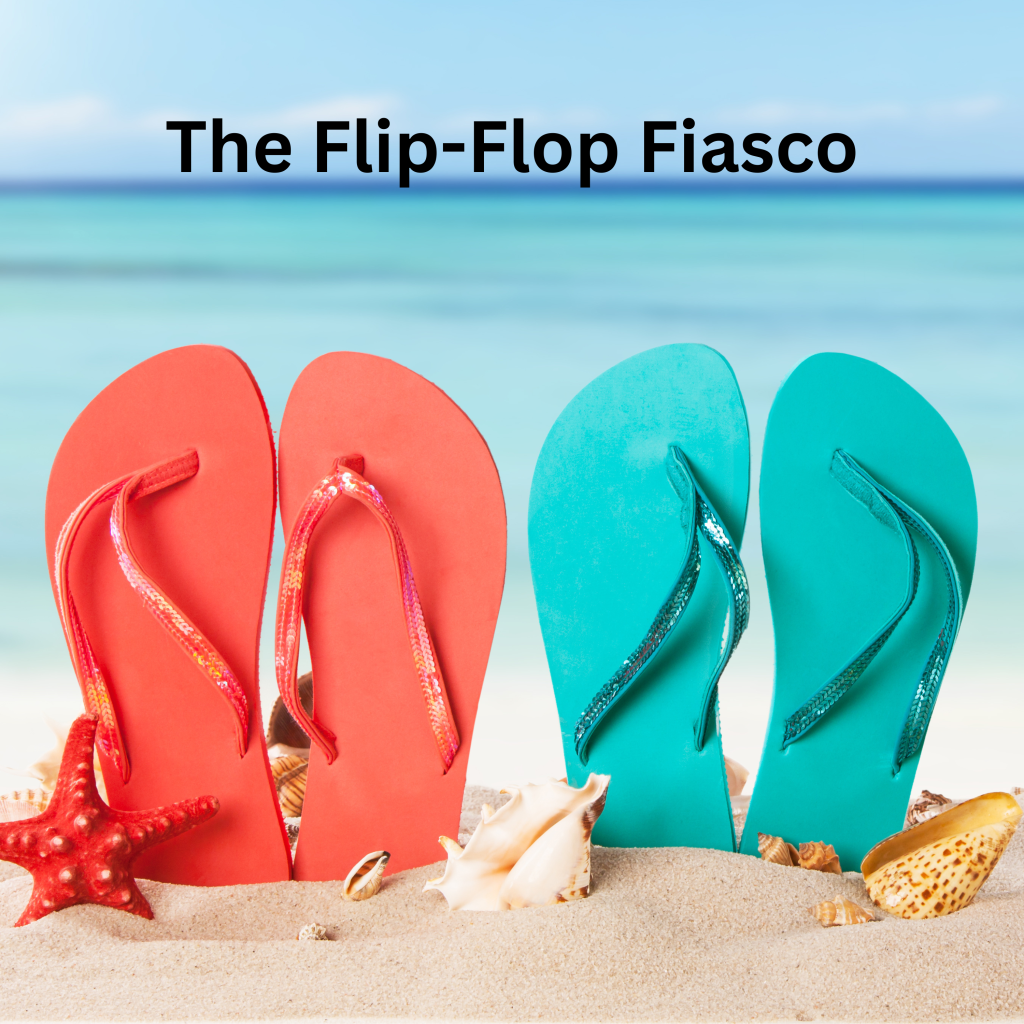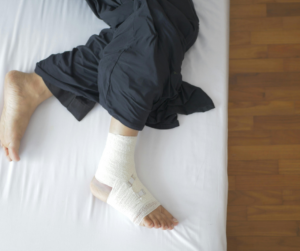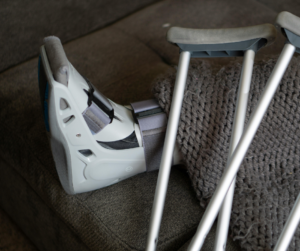Summer is here, and with it comes the warm-weather footwear, like flip-flops. While these casual shoes are perfect for the beach, pool, and casual outings, they can also cause foot problems if not chosen and worn properly.
The Dos of Wearing Flip-Flops
- Choose High-Quality, Cork or Soft Leather Flip-Flops When shopping for flip-flops, prioritize quality. Opt for pairs made from high-quality, cork or soft leather. Cork/leather flip-flops minimize the risk of blisters and other irritations compared to synthetic materials. The softness and flexibility of cork and leather conform to the shape of your foot, providing a more comfortable fit.
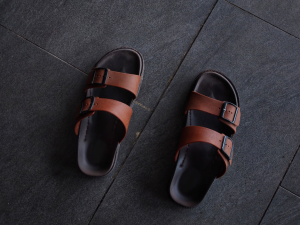
- Check the Flexibility of the Flip-Flop Before making a purchase, gently bend the flip-flop from end to end. It should bend at the ball of the foot, but never fold in half. This flexibility ensures that the flip-flop supports your foot properly and reduces the risk of injury.
- Ensure a Proper Fit It’s crucial that your foot fits well within the boundaries of the flip-flop. Your foot should not hang off any edge, as this can cause discomfort and increase the risk of injury. A properly fitted flip-flop provides better stability and support.
- Wear Flip-Flops in Public Areas Flip-flops are a must-have when walking around public pools, beaches, hotel rooms, and locker rooms. These areas are breeding grounds for foot infections, like plantar warts and athlete’s foot. Wearing flip-flops can protect your feet from these hazards.
The Don’ts of Wearing Flip-Flops
- Avoid Re-wearing Old Flip-Flops Just like any other footwear, flip-flops have a lifespan. Re-wearing the same pair year after year can lead to discomfort and potential foot problems. Regularly inspect your flip-flops for signs of wear and tear. If they appear worn out, it’s time to replace them.
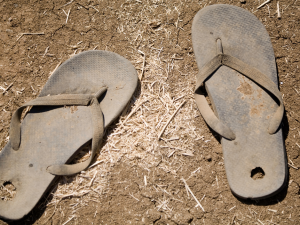
- Don’t Ignore Irritation Between Toes The area between your toes, where the flip-flop fits, is prone to irritation. Ignoring discomfort in this area can lead to blisters and infections. If you experience any irritation, it’s best to switch to another type of footwear until the area heals.
- Avoid Wearing Flip-Flops for Long Walks Flip-flops are not designed for long-distance walking. They offer minimal shock absorption and arch support, which can lead to foot pain and other issues. For long walks, choose footwear that provides better support and cushioning.
- Don’t Do Yard Work in Flip-Flops Engaging in yard work while wearing flip-flops can be dangerous. Activities like mowing the lawn or using a weed-eater require shoes that fully protect your feet. Always wear sturdy, closed-toe shoes for such tasks to prevent injuries.
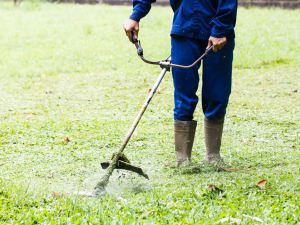
- Avoid Playing Sports in Flip-Flops Flip-flops are not suitable for sports activities. Wearing them while playing sports can lead to foot and ankle injuries such as sprains and fractures. Always wear appropriate athletic shoes that offer the necessary support and protection.
Choosing the Right Flip-Flops
- Arch Support: Look for flip-flops with built-in arch support. This feature helps to maintain the natural alignment of your feet and reduces strain on your arches.
- Cushioning: Adequate cushioning is essential for absorbing shock and providing comfort. Choose flip-flops with cushioned footbeds to protect your feet from impact.
- Heel Support: A slightly raised heel can provide additional support and reduce pressure on your Achilles tendon. Avoid completely flat flip-flops, as they can lead to foot pain and other issues.
- Wide Straps: Flip-flops with wide straps distribute pressure more evenly across your feet, reducing the risk of irritation and blisters.
The Importance of Proper Footwear
While flip-flops are convenient and comfortable for short-term wear, it’s important to recognize their limitations. Inadequate footwear can lead to various foot problems, including:
- Plantar Fasciitis: This condition involves inflammation of the plantar fascia, a thick band of tissue that runs across the bottom of your foot. It can cause severe heel pain and is often exacerbated by wearing unsupportive footwear.
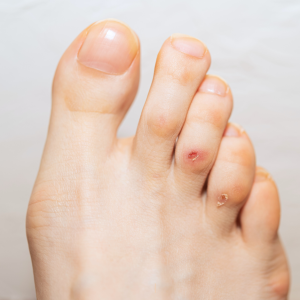
- Blisters and Calluses: Friction between your feet and poorly fitting flip-flops can lead to blisters and calluses. These can be painful and may become infected if not treated properly.
- Foot and Ankle Injuries: Flip-flops provide minimal support, increasing the risk of foot and ankle injuries. Activities that require stability and support should always be done in appropriate footwear.
- Toe Problems: The thong part of flip-flops can cause irritation and pressure between your toes, leading to conditions like blisters, corns, and even ingrown toenails.
Alternatives to Flip-Flops
If you love the convenience and comfort of flip-flops but are concerned about their potential drawbacks, consider these alternatives:
- Sandals with Straps: Sandals that feature multiple straps provide better support and stability than traditional flip-flops. Look for designs with adjustable straps to customize the fit.
- Slides: Slide sandals offer a similar casual feel to flip-flops but with a more secure fit. They typically have a single wide strap across the top of the foot, reducing the risk of irritation between the toes.
- Orthopedic Sandals: These sandals are designed specifically to provide support and comfort for your feet. They often feature contoured footbeds, arch support, and cushioned soles.
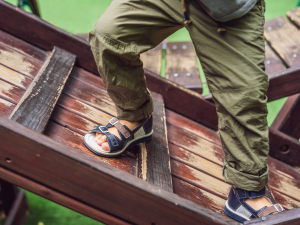
Call Foot & Ankle Centers for a complete list of Podiatrist recommended Footwear:
Foot & Ankle Centers
Morris: (815) 942-9050
Yorkville: (630) 553-9300


